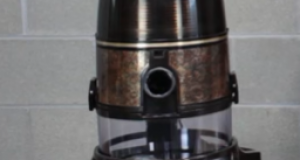Find Out How to Locate a Vacuum Cleaner Leak
Vacuum Cleaners are the workhorses of our houses and offices, in fact, every place that requires regular cleaning. Vacuum cleaners are inevitable. They make your job easy and more efficient too. I mean, who uses that broom in this age of vacuum cleaners! But very small number of people know how to locate a vacuum leak?
Given the amount of work being taken from this appliance daily, it is probable to develop signs of wear and tear. Wear and tear due to excessive and daily use most commonly report vacuum leaks. For those obsessed with cleaning or those with conditions like asthma and dust allergies, a vacuum cleaner not working is a life emergency. I mean, who lives without a vacuum cleaner!
So, here we are, bringing you everything you need to know about how to locate a vacuum leak? How do you know if it’s a leak and not a clog? Are there any relevant precautions or special instructions?
Let’s not wait anymore.
Signs of a Vacuum Leak
A vacuum leak may or may not be visible to the naked eye. Sometimes, you can’t even feel it; the leak is so small. Then how to tell if your vacuum cleaner has developed a leak or tear?
- You vacuum the same portion of your house, room, or office, and you notice that the vacuum cap or the vacuum bag does not fill as much as it used to. This tells that the vacuum has lost its suction, most probably due to a leak.
- Secondly, it will be easier to diagnose a vacuum cleaner leak if the area you vacuum is dusty. If you observe that the dirt scatters instead of being suctioned, the vacuum cleaner most probably has a tear or leak.
If the above signs are positive, you may want to observe the sound of your vacuum cleaner. If it is high-pitched, the problem with your vacuum cleaner is probably a clog in the hose. If it is the same, it is most probably a leak.
How to Locate a Vacuum Leak
A vacuum hose is the part of a vacuum cleaner that most commonly develops a tear or a leak. This is because this part tends to be overstretched, and it becomes brittle and tears apart. Anyhow, you should check every part for a leak following these basic steps:
Step 1: Use your Fingers and Hands
This is the preliminary step. Run your hands through the surface of the hose. See if you feel a bump, slit, or some rough area. This bump is your vacuum cleaner leak! But you will most probably not be able to locate smaller leaks this way. So, stick tight! We have got you.
Step 2: Disconnect the Hose
If you didn’t find the leak by mere feeling the surface of the hose, it is time to take it off. You might have taken it off many times, and you know that it is not that big a deal. Just grab its mouth and detach it.
But with upright vacuum cleaners, where the hose is permanently attached. And the hose is difficult to take it off. You need to unscrew a whole panel to gain access to the point of attachment of the hose to the vacuum machine. For this, you may need to consult the instructions manual accompanying your vacuum model. Or if not available at the moment, visit the company’s website for pdf manual and repair diagrams.
If even then, you are unable to separate the two, you have to continue the following procedure with the hose attached. In that case, take special care of the motor components of the vacuum.
Step 3: Fill the Hose with Water
Now that you have the hose and the rest of the vacuum machine in separate parts take the hose near a water source. It may be a large sink, bathtub, or a bucket filled with water.
Fill the hose up with water. But for that, you have to hold both ends upright, making a U-shape. This way, the water is trapped in the U-shaped hose.
Step 4: Slosh the Water Back and Forth
Now, this is important. Holding the hose in an upright position, slosh the water back and forth. In the case of an intact vacuum hose, keep the motor components at a higher level than the hose and water inside. Water should not touch the remaining part of the vacuum machine.
This is where you observe carefully. There could be the smallest hole or break in the hose, and water you will see water leaking out of it. But you know, for air, it is a big leak that could seriously affect the suction power of your vacuum cleaner.
Mark the leak or use duct tape to temporarily close it up.
Special Tips and Instructions
Here are some instructions you should definitely keep in mind while you locate a vacuum leak:
- Make sure you don’t pull on the hose very hard. There may be a little screw or something that could have fastened it strongly. Avoid damaging the hose or the hose coupling.
- Make sure you do the whole job with water away from the vacuum motor. In case you have both attached, set it up in such a way that the vacuum motor part sits at a higher level. Water in the hose should not go up that level.
Final Thoughts
Vacuum cleaners are a blessing and also an inevitable home appliance. You get to do your job yourself, and in the most efficient way at the same time. With so much rigorous use on a daily basis, it is very usual and natural for your vacuum to wear and tear. Vacuum leaks are the most common ones. How to locate a vacuum leak?
So, before you go and consult your company for vacuum repair, go confirm yourself it is a leak. And then you can locate it too on your hose. So that you don’t bother anyone before you make sure what is wrong with your vacuum cleaner!
Just follow the instructions above, and you are set to go. Don’t forget to take special care while unscrewing the panel of the hose coupling.




